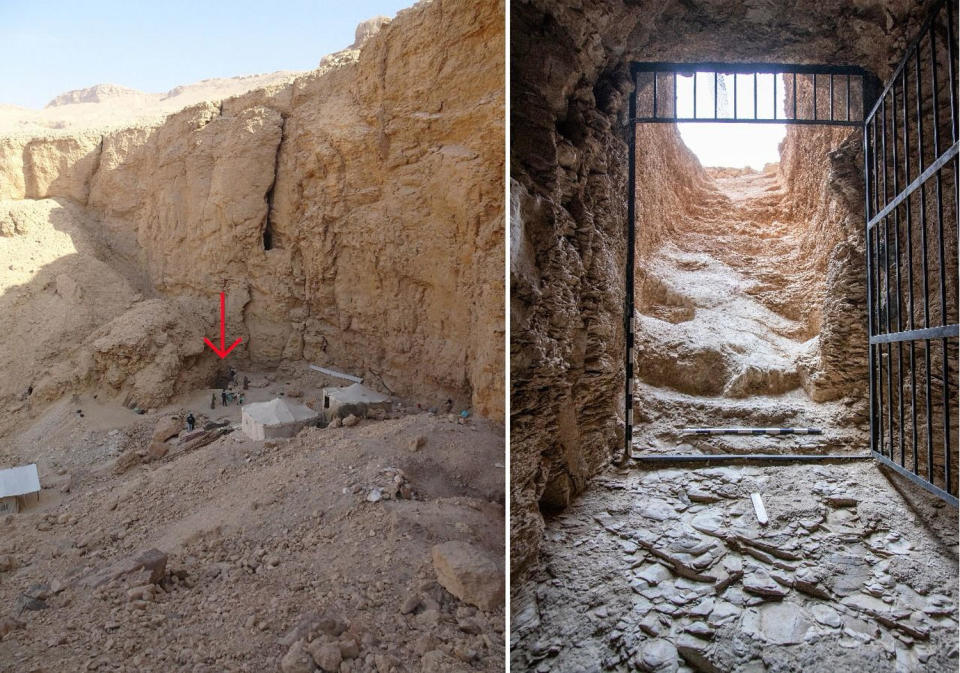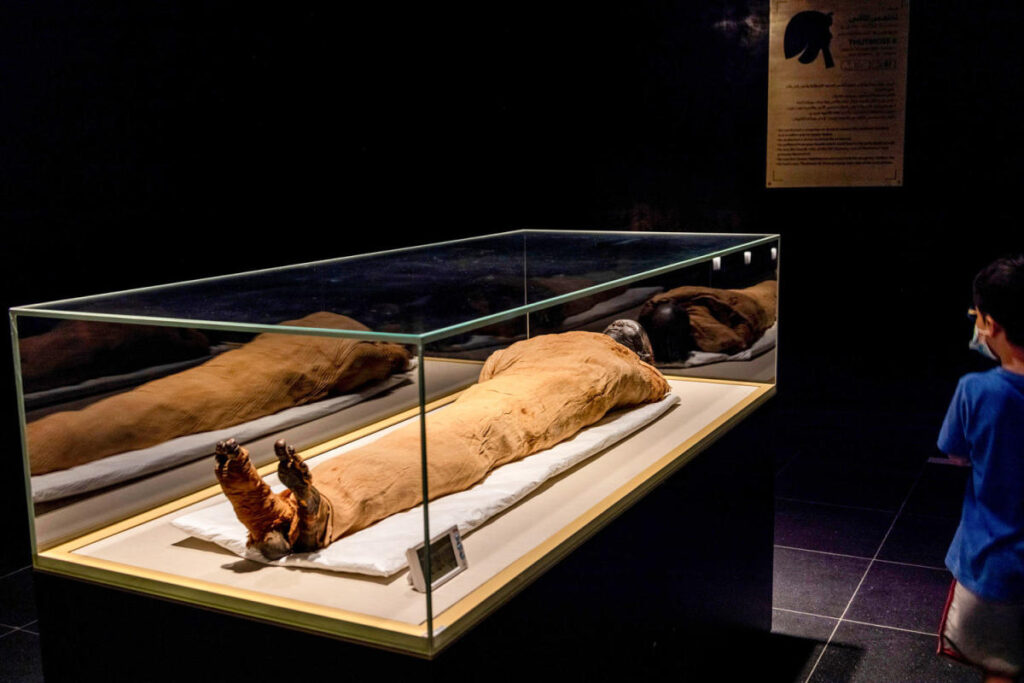CAIRO — A long lost tomb of an Egyptian pharaoh has been found, the country’s antiquities ministry said Tuesday, answering a great mystery of one of ancient Egypt’s most prosperous eras.
King Thutmose II of the 18th dynasty, who reigned during the 15th century B.C., was the husband of one of ancient Egypt’s greatest pharaohs, Queen Hatshepsut, who ruled over an era of prolific building and expanding trade routes.
He was also an ancestor of Tutankhamen’s, whose tomb was discovered in 1922 and remains one of the most intact royal Egyptian tombs ever found.
While Thutmose II’s mummy was found in the 19th century as part of a trove of mummies, his tomb had not, leaving a gap in what archeologists knew about a king who ruled during one of Egypt’s most prosperous eras.
“It was a very rich period,” said British Egyptologist Chris Naunton, who was not involved in the excavation. But the mystery of Thutmose’s tomb “was a glaring gap, and that gap has now been filled.”
The entrance and main corridor of the tomb, located just west of the Valley of the Kings, was first uncovered in 2022. A team of British and Egyptian archeologists later identified the tomb, initially believed to be that of a royal wife, as belonging instead to a pharaoh.
The remains of the decorations seen in Thutmose II’s tomb.
“The fact that the whole area where the new tomb has been found was previously only associated with royal women makes this new discovery all the more intriguing,” said archeology professor Joann Fletcher at the University of York in Britain.
Egypt has hailed the uncovering of the long lost tomb as one of the greatest discoveries in years.
“It is one of the most important discoveries in this century because it was one of the tombs that we were not able to locate since the discovery of King Tut,” Mohamed Ismail, secretary-general of Egypt’s Supreme Council of Antiquities, told NBC News in an interview.
In a statement, the country’s antiquities ministry said the artifacts found in the tomb, including some funerary furniture, “add an invaluable chapter to the history of the region and the reign of this king.”

The entrance to the tomb of King Thutmose II near Luxor in southern Egypt.
The mission’s field director, British archaeologist Piers Litherland, said it took months for the team to clear the debris and make its way into the tomb.
“Part of the ceiling was still intact: a blue-painted ceiling with yellow stars on it. And blue-painted ceilings with yellow stars are only found in kings’ tombs,” Litherland told the BBC World Service.
“When you come across something that you’re not expecting to find, it’s emotionally extremely sort of turbulent,” he said.
Litherland said the tomb, which was built under a waterfall, had been deliberately emptied after being flooded within a few years of the king’s burial.
Without the mummy, Litherland said, the archeologists identified whose tomb it was from the inscriptions on fragments of alabaster jars they found that were likely to have been “broken when the tomb was being moved.”
Thutmose II’s name carved into ceramics found at the burial site.
“Thank goodness they did actually break one or two things, because that’s how we find out whose tomb it was,” he said.
The remains were moved to a second tomb, which he said “is likely to be intact.” He said the location of the second tomb had been identified, buried under 80 feet of rock and limestone plaster.
“They’re quite difficult to get at, but we think we know where they are,” he said. “This would be only the second king’s tomb to be found with all its major great goods in place.”
Charlene Gubash reported from Cairo and Mithil Aggarwal from London.
This article was originally published on NBCNews.com
Read the full article here


